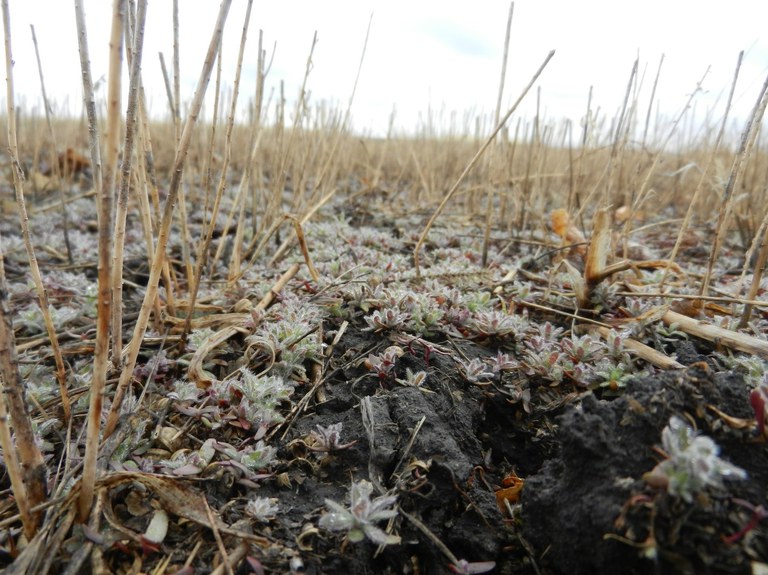Fall Weed Management Strategies
The calendar is turning to October, which means regular frost risks. But, before the spray equipment is put away for the winter, make sure you are satisfied with your weed management strategy. There is still time to prepare next season’s crops for a clean start. Here are two things to consider:
1: Perennial and winter annual weed management. Fall is the best time to control most perennial and winter annual weeds, including species like downy brome, Canada thistle, dandelion, and horseweed. Typical applications for these weeds include products like glyphosate and 2,4-D. Keep in mind, glyphosate-resistant horseweed is advancing very rapidly throughout North Dakota. With the amount of increased presence this season, I would expect that next season it will be an abundant weed in a large percentage of ND fields. Page 69 of the 2019 ND Weed Control Guide has product and application information specific to horseweed (and many other problem weeds). This is a weed that is going to be very challenging to control in-crop, but there are a number of options for fall or spring management. Horseweed is particularly challenging in reduced-till fields. October is often on the late side for these applications, but with the season we are having (no killing frost near Carrington yet), there are still opportunities to get a head start.
2: Residual herbicide application for row crops. The last few springs have had very challenging planting conditions resulting in narrow fieldwork windows. If residual herbicide applications are in danger of being missed in the spring due to planting constraints, you may want to consider a fall application. Products like flumioxazin and pyroxasulfone (ex. Valor, Fierce) have worked well with little drop in efficacy when applied in late October in Carrington. Other products like sulfentrazone (ex. Spartan, Authority) work but in our experience a fall application will require a higher rate than a person uses in the spring. These products’ strengths are some of the most troublesome weeds we deal with today. Kochia can be especially challenging in the spring since it may have emerged prior to any field work, and getting contact products into dense kochia leaf clusters may not be always be possible (figure 1). Using one or more of these chemistries will help reduce and/or delay the spring emergence of kochia and pigweed species in particular. Also, if you are growing a crop with limited herbicide options (lentils for instance, or if intercropping), fall herbicides can be a big advantage in your weed management success.
 Figure 1. Kochia emergence on May 1 of 2014, prior to any field work that season.
Figure 1. Kochia emergence on May 1 of 2014, prior to any field work that season.
Mike Ostlie, Ph. D.
Mike.Ostlie@ndsu.edu
Research Agronomist


